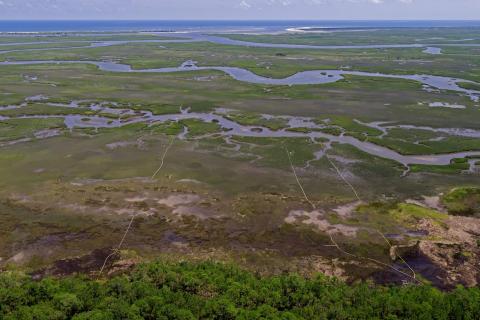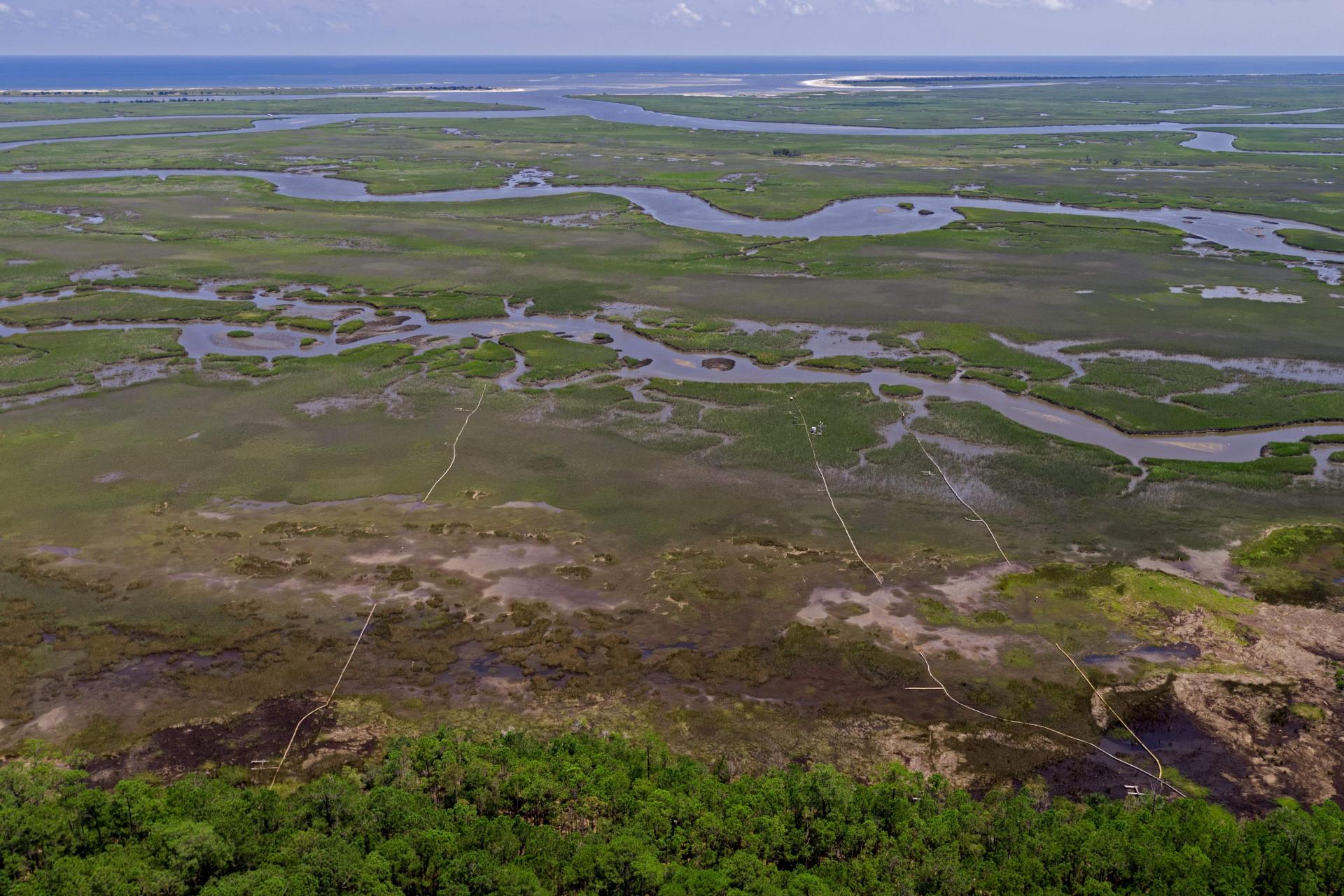
The South Carolina reserves are building on regional efforts to use Unmanned Aerial Systems (UAS) to assess marsh vulnerability metrics in response to increasing rates of sea level rise.
With roughly one third of the Southeast's estuarine salt marsh acreage, South Carolina faces an escalating concern at local and state levels over marsh vulnerability due to rising sea levels. The ACE Basin and North Inlet – Winyah Bay (NI-WB) NERRs received 2021 Science Collaborative capacity building funds to develop a community of interested managers, regulators, and scientists and identify appropriate methods to assess salt marsh health in South Carolina. As part of this effort, questions emerged that centered around identifying appropriate vulnerability metrics and thresholds to assess vulnerability to impacts from increasing rates of sea level rise as a first step for restoration strategies. While a variety of marsh vulnerability metrics have been developed nationally, their direct applicability to Southeastern marshes remains a knowledge gap, potentially due to the region's sparse vegetation densities. However, several of the known metrics can be derived from remotely sensed data. Conveniently, another Science Collaborative-funded project, Drone the SWMP, expanded remote sensing capabilities in the Southeast by establishing Unmanned Aerial Systems (UAS)-based data collection, which has provided the necessary tools and processing methodologies to successfully utilize UAS within the South Carolina reserves.
Building on these prior efforts, this team will assess existing marsh vulnerability metrics at multiple spatial scales at the two South Carolina reserves. Responding to a critical need of local managers, the main output will be an outline of available local marsh vulnerability methodologies, their current applicability and limitations with respect to marsh management and restoration needs, and potential improvements. The team is working closely with reserve staff, researchers, agencies such as South Carolina’s coastal zone management agency, and communities including Kiawah Island and Folly Beach.
Pamela Marcum (South Carolina Department of Natural Resources) gives an introduction to "Adapting salt marsh vulnerability assessment methodologies to southeastern salt marshes."
